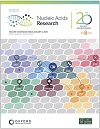Latest Publications
Inference of multiple mergers while dating a pathogen phylogeny
 Helekal, David, Koskela, Jere and Didelot, Xavier
Helekal, David, Koskela, Jere and Didelot, Xavier
Here we consider the problem of detecting the presence of multiple mergers in the context of dating a phylogeny, that is determining the date of each of the nodes. We use the Lambda-coalescent theory as a modelling framework and show how Bayesian inference can be efficiently performed using a Billera-Holmes- Vogtmann space embedding and a customised Markov Chain Monte Carlo sampling scheme. We applied this new analysis methodology to a large number of simulated datasets to show that it is possible to infer if and when multiple merger events occurred, and that the phylogenetic dating is improved as a result of taking this information into account. We also analysed real datasets of Vibrio cholerae and Mycobacterium tuberculosis to demonstrate the relevance of our approach to real pathogen evolutionary epidemiology. We have implemented our new methodology in a R package which is freely available at https://github.com/dhelekal/MMCTime.
MIBiG 4.0: advancing biosynthetic gene cluster curation through global collaboration
 Zdouc, Mitja M. et al inc. Alberti, F
Zdouc, Mitja M. et al inc. Alberti, F
Specialized or secondary metabolites are small molecules of biological origin, often showing potent biological activities with applications in agriculture, engineering and medicine. Usually, the biosynthesis of these natural products is governed by sets of co-regulated and physically clustered genes known as biosynthetic gene clusters (BGCs). To share information about BGCs in a standardized and machine-readable way, the Minimum Information about a Biosynthetic Gene cluster (MIBiG) data standard and repository was initiated in 2015. Here, we describe MIBiG version 4.0, an extensive update to the data repository and the underlying data standard.
Single-Cell Analysis with Spatiotemporal Control of Local pH
 Kelsey Cremin, Gabriel N. Meloni, Orkun S. Soyer, Patrick R. Unwin
Kelsey Cremin, Gabriel N. Meloni, Orkun S. Soyer, Patrick R. Unwin
This work presents an experimental platform combining scanning ion conductance microscopy (SICM) with confocal laser scanning microscopy (CLSM), using intra- and extracellular pH indicator dyes to study the impact of acid delivery on individual HeLa cells within a population.. We find a strong dependency between the intracellular pH and the extracellular pH gradient imposed by local acid delivery. Postdelivery intracellular pH recovery depends on the extent of the acid challenge, with cells exposed to lower pH not returning to basal intracellular pH values after the extracellular pH recovers. This is a unique method for concentration-gradient challenge studies of cell populations that will have broad applications in cell biology. SICM can be used to deliver different chemicals and enables a wide range of local conditions to be applied across a cell population, for which the effects can be investigated at the single-cell level.
Partitioning of fatty acids between membrane and storage lipids controls ER membrane expansion
 Pawel K Lysyganicz, Antonio D Barbosa, Shoily Khondker, Nicolas A Stewart, George M Carman, Phillip J Stansfeld, Marcus K Dymond, Symeon Siniossoglou
Pawel K Lysyganicz, Antonio D Barbosa, Shoily Khondker, Nicolas A Stewart, George M Carman, Phillip J Stansfeld, Marcus K Dymond, Symeon Siniossoglou
Here we demonstrate that a lipid-degradation pathway inhibits expansion of the endoplasmic reticulum (ER) membrane. Phospholipid diacylglycerol acyltransferases (PDATs) use endogenous phospholipids as fatty-acyl donors to generate triglyceride stored in lipid droplets. The significance of this non-canonical triglyceride biosynthesis pathway has remained elusive. We show that active Lro1 mediates retraction of ER membrane expansion driven by phospholipid synthesis. Furthermore, subcellular distribution and membrane turnover activity of Lro1 are controlled by diacylglycerol produced by the activity of Pah1, a conserved member of the lipin family. Collectively, our findings reveal a lipid-metabolic network that regulates endoplasmic reticulum biogenesis by converting phospholipids into storage lipids.
Modulation of stress-related behaviour by preproglucagon neurons and hypothalamic projections to the nucleus of the solitary tract
 Marie K. Holt, Natalia Valderrama, Maria J. Polanco, Imogen Hayter, Ellena G. Badenoch, Stefan Trapp, Linda Rinaman
Marie K. Holt, Natalia Valderrama, Maria J. Polanco, Imogen Hayter, Ellena G. Badenoch, Stefan Trapp, Linda Rinaman
Stress-induced behaviours are driven by complex neural circuits and some neuronal populations concurrently modulate diverse behavioural and physiological responses to stress. Glucagon-like peptide-1 (GLP-1)-producing preproglucagon (PPG) neurons within the lower brainstem caudal nucleus of the solitary tract (cNTS) are particularly sensitive to stressful stimuli and are implicated in multiple physiological and behavioural responses to interoceptive and psychogenic threats. However, the afferent inputs driving stress-induced activation of PPG neurons are largely unknown, and the role of PPG neurons in anxiety-like behaviour is controversial. Through chemogenetic manipulations we reveal that cNTS PPG neurons have the ability to moderately increase anxiety-like behaviours in mice in a sex-dependent manner. Our findings reveal sex differences in behavioural responses to PPG neural activation and highlight a hypothalamic-brainstem pathway in stress-induced hypophagia.
Jeremy Keown publications
 Structure of the Nipah virus polymerase complex
Structure of the Nipah virus polymerase complex
Esra Balıkçı, Franziska Günl, Loïc Carrique, Jeremy R Keown, Ervin Fodor, Jonathan M Grimes
 Structural characterization of the full-length Hantaan virus polymerase
Structural characterization of the full-length Hantaan virus polymerase
Hantaviridae are a family of segmented negative-sense RNA viruses that contain important human and animal pathogens. Hantaviridae contain a viral RNA-dependent RNA polymerase that replicates and transcribes the viral genome. Here we establish the expression and purification of the polymerase from the Old World Hantaan virus and characterise the structure using Cryo-EM. The insights gained here guide future mechanistic studies of both the transcription and replication activities of the hantavirus polymerase and for the development of therapeutic targets.
